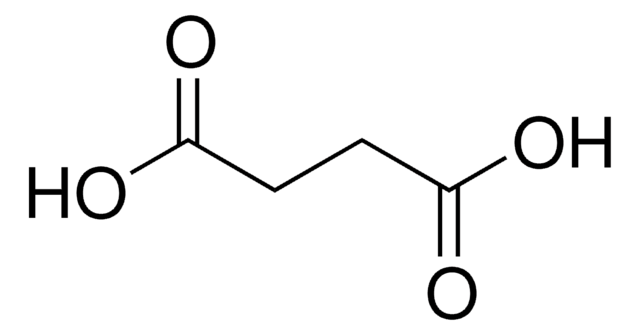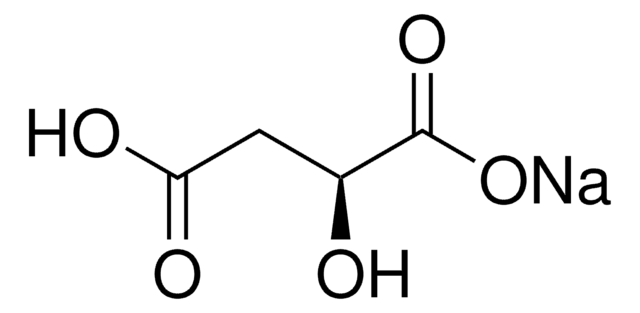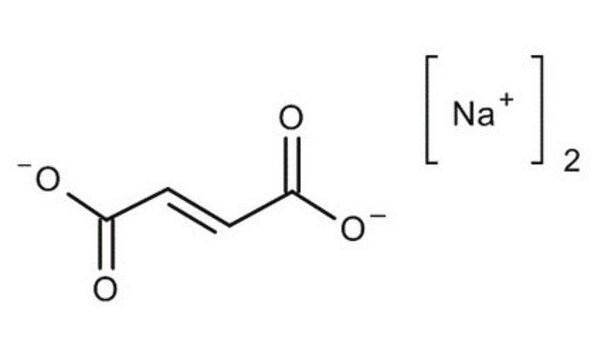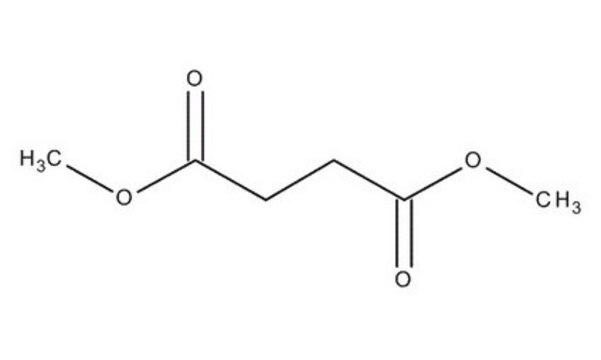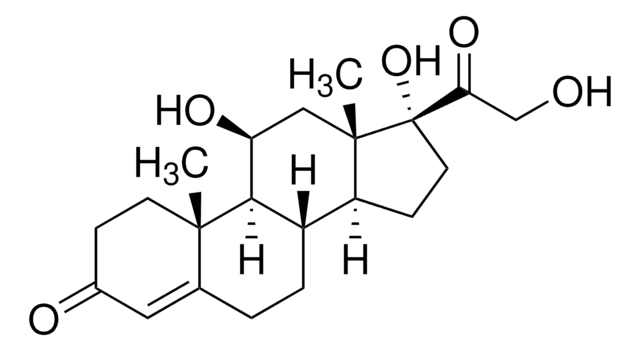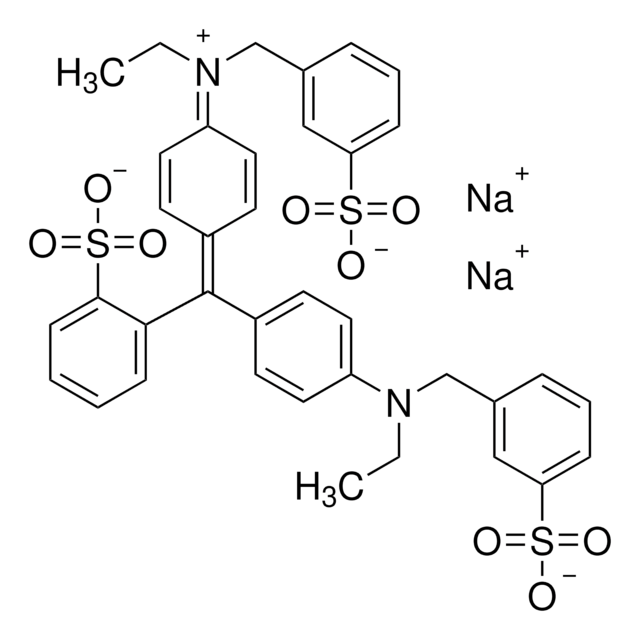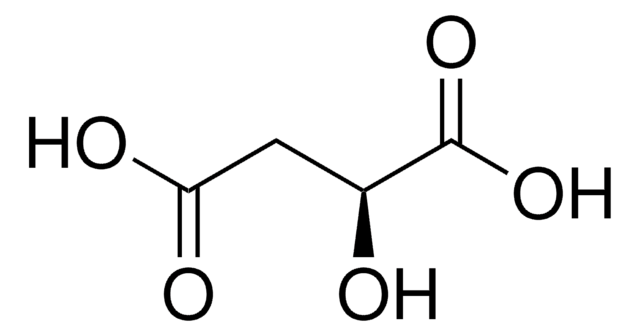S9637
Sodium succinate dibasic hexahydrate
BioReagent, suitable for cell culture, suitable for insect cell culture
Synonym(s):
Butanedioic acid disodium salt, Succinic acid disodium salt
About This Item
Recommended Products
product line
BioReagent
Quality Level
technique(s)
cell culture | insect: suitable
cell culture | mammalian: suitable
pH
8—9.5 (25 °C, 270 g/L)
solubility
H2O: 100 mg/mL, clear, colorless
SMILES string
O.O.O.O.O.O.[Na+].[Na+].[O-]C(=O)CCC([O-])=O
InChI
1S/C4H6O4.2Na.6H2O/c5-3(6)1-2-4(7)8;;;;;;;;/h1-2H2,(H,5,6)(H,7,8);;;6*1H2/q;2*+1;;;;;;/p-2
InChI key
ZBTUYCUNQBRXOR-UHFFFAOYSA-L
Looking for similar products? Visit Product Comparison Guide
General description
Application
- as a supplement in the assay medium to incubate mitochondria to measure the specific activity of complex-II
- as a component in plant induction medium/ protoplast induction media (PIM) for plant regeneration
- as a small-molecule additive in the fresh medium to study its positive synergistic effects on transgene expression in Chinese hamster ovary (CHO) cells
Features and Benefits
- Versatile and adaptable for a wide variety of laboratory and research applications
- BioReagent Grade Sodium succinate for your Cell Biology and Biochemical research
- Tested for Mammalian and Insect cell culture applications
Other Notes
Storage Class
11 - Combustible Solids
wgk_germany
WGK 1
flash_point_f
Not applicable
flash_point_c
Not applicable
ppe
dust mask type N95 (US), Eyeshields, Gloves
Certificates of Analysis (COA)
Search for Certificates of Analysis (COA) by entering the products Lot/Batch Number. Lot and Batch Numbers can be found on a product’s label following the words ‘Lot’ or ‘Batch’.
Already Own This Product?
Find documentation for the products that you have recently purchased in the Document Library.
Customers Also Viewed
Our team of scientists has experience in all areas of research including Life Science, Material Science, Chemical Synthesis, Chromatography, Analytical and many others.
Contact Technical Service
